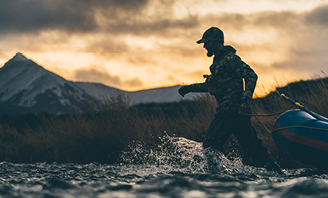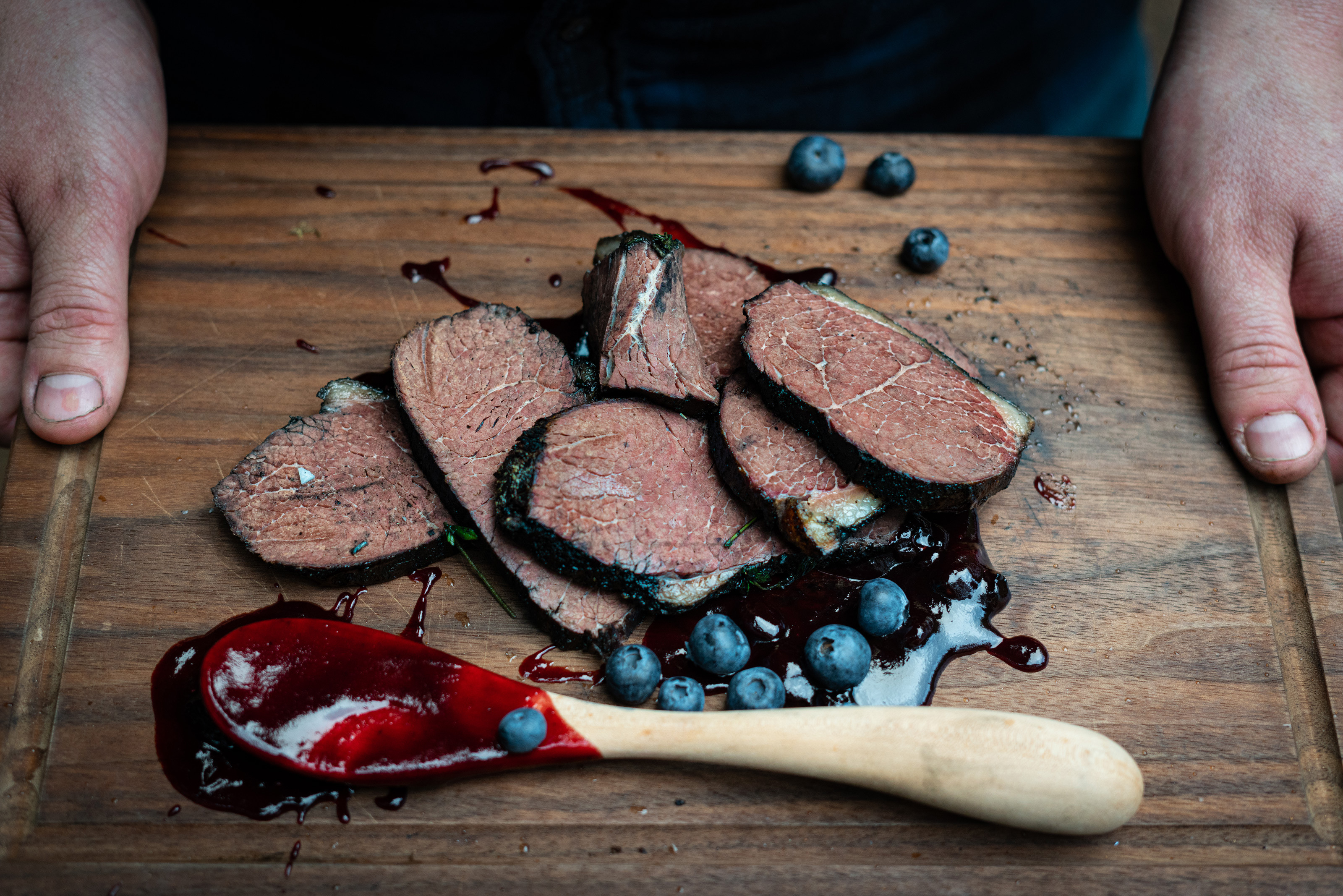There are a lot of preconceived notions about bear meat. We hope to dispel some of those with this recipe. When treated properly, good bear meat eats like a cross between beef and lamb, maybe just a touch sweeter. In the spring time, the majority of a bear's diet consists of young tender grasses, no different than any domestic livestock. The fat on bear meat can retain a lot of “terroir” from what they have been eating, so it's important to process the meat properly. If you shoot a coastal bear off a salmon stream, there is a very good chance the meat will have some fish smell to it. If this is the case, remove as much of the fat as you can before you freeze it. An interior bear or a fall bear found up high in the blueberries will have a much different flavor, and you will not have to be as scrupulous with removing the fat.
If you have a chance to cook some in the moment after the kill, you will quickly figure out how to best approach the fat removal. If you feel that the flavor of the meat you are working with is on the strong side, we would suggest finding a different recipe, something very strong in flavor that will help to cover up some of the strong taste. The bear used in this recipe was very mild and we were able to leave some of the fat on it. A lot of people have neglected to take these steps, and more often than not, it leaves a bad taste in their mouth.
Trichinosis can also be a big hurdle for some hunters to overcome, but when cooked properly, bear meat is completely safe. This article from Hank Shaw will give you a complete understanding of the risks involved and how to be safe.
One of the great changes we have seen over the last couple years amongst hunters is a desire to try new recipes, techniques, meats, and cuts that in the past might not have made it to the dinner table. One of those new techniques that has become more common is sous vide cooking. The process of cooking “under pressure” at low temperatures in a water bath. Sous vide is a natural fit for game and provides lots of great benefits over more mainstream techniques. This recipe was cooked using the sous vide method, but there is also very simple directions for cooking it in the oven prior to the roast.
Lastly, one of the key ingredients of this recipe is the charcoal steak rub. These rubs are becoming very popular and for good reason. Shake it on any meat before cooking and you instantly get a deep rich hardwood grilled flavor with none of the hassle of even starting a fire. You can find lots of charcoal rubs online, and they will all work, but this one from Sebastian & Co is a cut above the rest.




